
As an animal actively navigates, or is passively carried through its environment, its eyes receive continuous visual motion signals generated by its movement relative to the surroundings. How does the vertebrate brain process such visual information and prepare appropriate locomotor and eye movement behavior?
Our group investigates the underlying neural circuits in zebrafish larvae. We aim to understand how optic flow is filtered by the optic tectum and the pretectum to mediate behavioral responses.
Furthermore, we study how local networks produce function in the (pre-) motor systems in the hindbrain. The neural integrator for horizontal eye movements forms a short-lived memory of eye positions by maintaining eye-position related neural activity in the absence of input. It serves as a paradigm to identify mechanisms of short-term information storage, which is also needed in many other vertebrate brain areas of higher complexity.
Recently, we began to characterize the identified circuits also in the context of natural zebrafish habitats and behavioral needs, in an effort to better understand the specific tasks the zebrafish brain performs.
Zebrafish larvae are well-suited for exploring vertebrate brain functions because their brain is relatively simple and translucent, so you can see and manipulate activity directly. We use a combination of optogenetics, two-photon microscopy, genetics, behavioral assays, as well as other physiological approaches and computation to investigate the architecture and mechanisms of the larval neural circuitry.
Visual impressions of work in the Arrenberg lab
(click here for the description of our research)

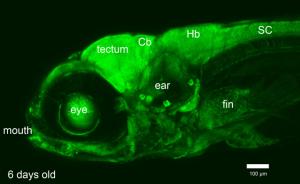

Light rays in Petri dish lid 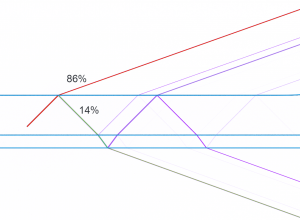
Ray paths in Petri dish lid 
Illustration glass bulb 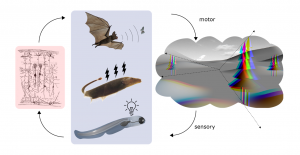
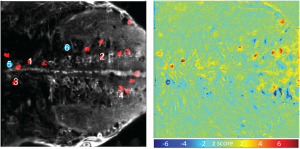

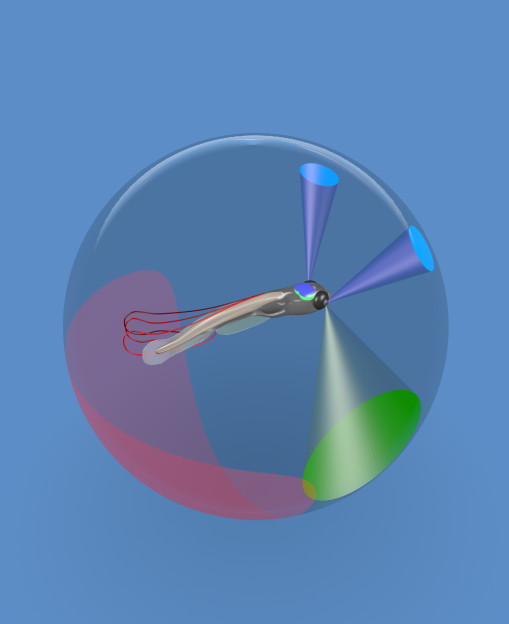
Receptive fields associated with prey capture and optomotor behavior 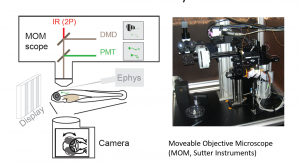



 from Go Fish Poster
from Go Fish Poster

